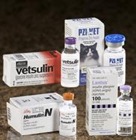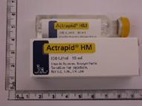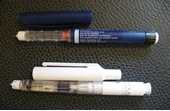- Insulin preparation
- Injection technique
- Complications
To know more click on any drug
 |
 |
 |
Actrapid
Humalog
Humulin L
Humulin N
Humulin R
Humulin U
Humulin 80/20 or 70/30
Mixtard 30/70 or 50/50
Monotard
Penmix 10, 20, 30, 40, or 50
Ultratard
Insulin: Type and timing help manage your blood sugar
The time effect of insulin and length of action can vary from person to person, and can also depend on
- Where the injection was given
- Temperature
- Physical activity
- Blood supply
- The type of diabetes you have and your blood sugar level trends
- Your lifestyle
- What you eat
- Whether or not you have other health conditions
- How insulin may interact with other medications or supplements you take
The type of insulin best for you depends on when and the extent to which it affects your blood sugar, including:
- Onset of action – When it starts lowering your blood sugar
- Peak of action – When it exerts the maximum effect on your blood sugar
- Duration of action – How long the overall effect lasts
Your doctor may prescribe a mixture of insulin types to keep your blood sugar in target range throughout the day. You must keep a record of your blood sugar and record the time you give yourself insulin. Blood sugar readings that are persistently above or below your target range may mean you need to revise your treatment plan.
Pre-mixed insulin is available in a variety of types and strengths. You can also mix different types yourself when you prepare to give yourself an injection.
These are the types of insulin available and the timing of their effects.
|
Type
|
Generic and brand names
|
Onset of action
|
Peak of action
|
Duration of action
|
|---|---|---|---|---|
| Rapid-acting | Insulin lispro* (Humalog) Insulin aspart* (NovoLog) |
5 to 15 minutes | 1 to 2 hours | 3 to 4 hours |
| Short-acting | Insulin regular (Humulin R, Novolin R, others) Insulin regular buffered (Velosulin) |
30 to 60 minutes | 2 to 4 hours | 6 to 8 hours |
| Intermediate-acting | Isophane insulin (Humulin N, Novolin N) Insulin zinc (Humulin L) |
1 to 2 hours | 4 to 8 hours | 14 to 20 hours |
| Long-acting | Insulin zinc extended (Humulin U) |
2 to 4 hours | 4 to 20 hours | 20 to 36 hours |
| Insulin glargine* (Lantus) |
2 hours | No pronounced | Up to 24 hours |
*A modied form of synthetic insulin (analogue) that more closely resembles the action of insulin secreted by your pancreas.
INSULIN INDEXING
| TYPES | ACTIONS | SIDE EFFECTS | SPECIAL PRECAUTION |
|---|---|---|---|
|
Very fast acting: Contains Insulin Lispro. Fast acting: Contains Soluble Insulin (Neutral). Medium acting: Contains Isophane Insulin or Insulin Zinc Suspension. Long acting: Contains Insulin Zinc Suspension (Crystalline). Mixed long and short acting insulin (biphasic): Neutral and Isophane Insulin |
Insulin is important to our health because it allows the energy from our food to be used by the body. Food is made into glucose which goes into the bloodstream and travels around the body. Insulin controls the level of glucose in the blood, helping it to act as a fuel for our body. Without insulin glucose does not leave the bloodstream, but instead accumulates in the blood, causing major problems. |
|
|
Additional Patient Information:
- Follow the instructions on the label of the medicine or as directed by your doctor.
- Keep your extra stocks of insulin refrigerated.
- The insulin vial you are using can be left at room temperature. If you will soon be changing to a new vial, the new vial can be removed from the refrigerator so that it can come up to room temperature before you need to inject it.
- Most insulin can be kept at room temperature (up to 25oC) for up to a month. Discard any remaining insulin in a vial four weeks after first using.
- Insulin must not be frozen; if it is frozen do not thaw then use, throw it away.
- Regular blood glucose monitoring is important and will give you control over your diabetes.
- Do not miss meals or snacks.
- Always carry something sugary with you (e.g. glucose tablets, jellybeans) in case of a “hypo” or hypoglycaemic incident.
- When you get sick, your insulin needs might change. It is important you check your blood glucose regularly, and you should not stop your insulin. Your doctor or diabetes nurse should be able to advise you on what to do if you become ill.
- Frequent high blood glucose will cause long-term problems such as eye and kidney problems, so should be avoided.
- If you are thinking of getting pregnant, talk to your doctor first. It is best to get your diabetes very well controlled before conception.
- Rotate your injection sites.
- Check blood glucose levels before driving and every couple of hours during long journeys. It is important to avoid a “hypo” while driving.
- Wash your hands well before drawing up the insulin and injecting the dose.
SELF CARE
- avoid foods with high sugar and fat contents
- avoid taking snack between meals
- do not miss meals
- stop smoking
- stop alcohol
- visit your doctor regularly
- carry a card identifying that you are a diabetic (Medic Alert). This card
- exercise regularly, test your blood sugar prior to activity (do not
- have regular check on your eyes
- take care of your feet, do not treat corns by yourself
should show the type and amount of insulin that you are using
exercise immediately after an insulin injection)
DIABETIC MANAGEMENT DURING THE FASTING MONTH
The suggested time schedule for taking medications during the fasting month is shown below:
|
TIME
|
SCHEDULE
|
|---|---|
| 7.30 p.m. |
|
| 8.00 p.m. |
|
| 8.30 p.m. |
|
|
TIME
|
SCHEDULE
|
| 10.00 p.m. |
|
| 1.30 a.m. |
|
| 4.45 a.m. |
|
| 5.15 a.m. |
|
| 5.45 a.m. |
|
(Remember: Sahur should be taken as near Imsak as possible and not at midnight or after snack meals.)
Patients should continue with self-monitoring of blood sugar as this will safeguard against serious
disturbances of blood sugar level during the day, especially during the first week of Ramadan. It
is best to check the levels around 9 a.m., 3-4 p.m. and about 2 hours after “buka puasa”. Excessive exercise is usually discouraged during Ramadan because over exertion and exposure
to the hot sun may cause dehydration and hypoglycemia.
| Last Reviewed | : | 10 July 2008 |
| Writer | : | Dr. Nour Hanah Othman |
| : | Hadijah bt. Mohd Taib | |
| : | Rosidah bt. Din | |
| : | Nor Eizlin bt. Mohd Helmi |







